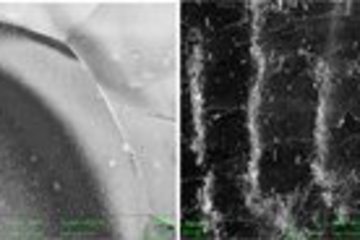All genres
101.
Talk
Eutectic NiAl-Re alloys processed under microgravity. TEMPUS Parabolic Flight April 2008 Meeting, Bonn, Germany (2008)
102.
Talk
Advanced high-strength and supraductile light-weight steel -microstructures-properties-applications-. Feuerfest-Kolloquium, Aachen, Germany (2008)
103.
Talk
Mechanical properties of high manganese steels - structures, plasticity, strength. Iberomet Congreso Iberoamericano de Metalurgica y Materiales, Cartagena de Indias, Colombia (2008)
104.
Talk
Entwicklung und Eigenschaften korrosionsbeständiger ferritischer Fe-Al-Cr Leichtbaustähle. VDI Wissensforum: Nichtrostende Stähle, Düsseldorf, Germany (2008)
105.
Talk
Entwicklung und Eigenschaften der TWIP Stähle. Stahl Akademie: Aufbaustudium für Führungskräfte, Krefeld, Germany (2008)
106.
Talk
Properties of refractory NiAl-(Cr,Mo,Re) alloys in relation to atomic defects and microstructures. SCTE 16th International Conference on Solid Compounds of Transition Elements, Dresden, Germany (2008)
107.
Talk
Ultra high-strength and ductile Fe-Mn-Al-C light-weight steels (MnAl-steels). RFCS Technical Group TGS7 Meeting, Harviala, Finland (2008)
108.
Talk
Ultrahigh strength and supraductile steels for automotive applications. SCT 08 Steel in Cars and Trucks, Wiesbaden, Germany (2008)
109.
Talk
Inhomogeneity of the Crystallographic Texture in Hot Rolled High-manganese TWIP Steels. 15th International Conference on Textures of Materials (ICOTOM15), Carnegie Mellon University Center in Pittsburgh, PA, USA (2008)
110.
Talk
Rietveld refinement of site occupation in ternary Nb(Cr,Al)2 Laves phase. Workshop "The Nature of Laves Phases XI", MPIE, Düsseldorf, Germany (2008)
111.
Talk
Mechanical properties of ferritic stainless AlCr steels. SCT 08 Steel in Cars and Trucks, Wiesbaden, Germany (2008)
112.
Talk
Das Potential von hochfesten und supraduktilen Fe–Mn–Al–Si–C Stählen für den zukünftigen Karosserieleichtbau - Stand der Technik und Entwicklungstrends. WAMM World Automotive Materials Meeting 2008, Bad Nauheim/Frankfurt, Germany (2008)
113.
Talk
Entwicklung, Mikrostrukturen und Eigenschaften hochfester und supraduktiler Leichtbaustähle aus Fe-Mn-Al-Si-(C)für zukünftige Designkonzepte im Fahrzeugbau. Forum für Metallurgie und Werkstofftechnik 2008, Loeben, Austria (2008)
114.
Talk
Development of high-temperature titanium and nickel aluminium intermetallics based on microgravity processing. Space for Innovation - Industry Forum for Material Research and Microgravity, Fachtagung "Materialforschung und Schwerelosigkeit für Industrieanwendungen", MPI für Eisenforschung (2008)
115.
Talk
High-performance soft Magnetic iron-silicon alloys for industrial applications processed under microgravity. Space for Innovation - Industry Forum for Material Research and Microgravity, Fachtagung "Materialforschung und Schwerelosigkeit für Industrieanwendungen", MPI für Eisenforschung, Düsseldorf (2008)
116.
Talk
Entwicklung und Eigenschaften korrosionsbeständiger ferritischer Fe-Al-Cr Leichtbaustähle. VDI Wissensforum: Nichtrostende Stähle, Stuttgart, Germany (2008)
117.
Talk
Mechanical properties of high manganese steels - structures, plasticity, strength. Tratermat 2008, Valencia, Spain (2008)
118.
Talk
Processing of eutectic NiAl–Cr and NiAl–Re alloys under microgravity. Meeting "TEMPUS Parabolic Flight September 2007", Bonn, Germany (2008)
119.
Talk
Höherfeste und supraduktile Leichtbaustähle auf der Basis Fe-Mn(Al, Si, C). Workshop Panzerstahl des Wehrwissenschaftlichen Instituts der Bundeswehr, Erding, Germany (2007)
120.
Talk
Struktur und Eigenschaften von Titanaluminiden (TiAl) - Leichtbaulegierungen für High Performance Motorkomponenten. Clauthal Industriekolloquium Sonderforschungsbereich 675, Clausthal (2007)











